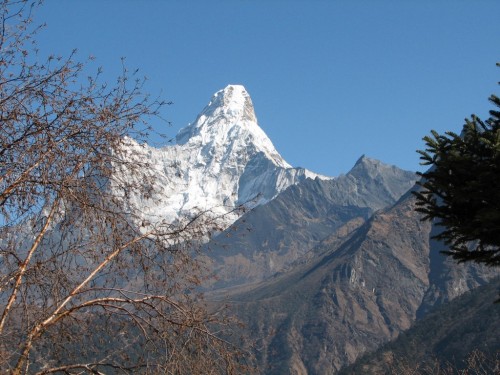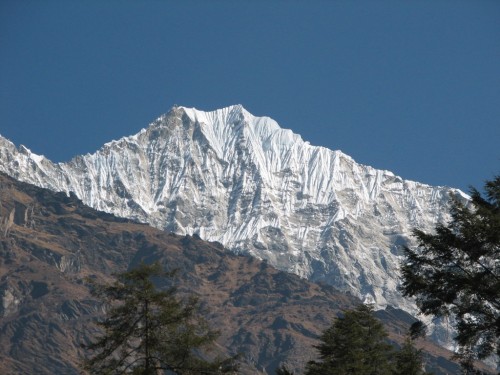What I am reading: photographic books about Nepal
Writing a novel: a writer’s journal part 25
What I am reading: photographic books on Nepal.
As a part of my research for background information for my children’s novel, I have been on a few visits to my local public library. Their collection of titles on Nepal is not great, but I did find several interesting titles. Two of these I mention here. Both could be categorised as coffee table style photographic essays. Both had minimal text which was more than compensated for by the brilliant photography. Most people would have found them extremely interesting just from a pictorial point of view. All of the photographs would have found a very comfortable home in publications such as National Geographic.
As an armchair traveller I enjoy the intriguing journeys of Michael Palin. He has an eye-probably two of them actually-for the bizarre, the amusing, the absurd and the downright confronting. This comes through in the various television travel series he has anchored over the years. Inside Himalaya is the spin-off book version of his television series Himalaya. The text in the book is sparse and as such was not of much help to me in my research. Despite that, I still enjoyed the sheer beauty of the photographs.
Pierre Toutain’s book Nepal is very similar. A little more than half the size of the Palin book, it matches it in the beauty of the photography. Palin’s book covers Pakistan, Tibet, Bhutan and Bangladesh in addition to Nepal, while Toutain’s book is totally focused on Nepal and as such, was more useful to me. It also has much more in the way of text (written by Michel Gotin). The text was far more informative and useful for my purposes.
My reading of these two beautiful books had one unfortunate side effect: I have a heightened desire to return someday soon the enigmatic and beautiful roof of the world, Nepal. I must get my novel finished, off to a publisher, accepted, published and then return on the proceeds from my writing. (I can dream, can’t I?)
References:
- Palin, M, Pao, B 2004, Inside Himalaya, Weidenfeld and Nicolson, London.
- Toutain, P, Gotin, M 1986, Nepal, Merehurst Press, London.
Further reading:
- My travels in Nepal – archive from my travel blog
- Writing a novel – more articles in the series about how I went about writing a novel.
What I am reading: ‘Braver than the Gurkhas’
Writing a novel: a writer’s journal part 22
What I am reading: “Braver than the Gurkhas” by Sikhar
I chose to read this little know book as background reading for the writing of my novel for children. Like my novel, this book is set in Nepal. It is based on true events but is written as fiction.
On the cover it states that this story is an account of ‘heroism of an oppressed minority fighting for survival.’ It is not an understatement. In the dedication it says it has been written in memory of Bir Bahadur Rai, the first known Nepali martyr for ‘Yesu.’
Nepal in the 1980s was still emerging into the modern world. Christian missionaries had been working in the country since the early 1950s, predominantly as medical staff in clinics and hospitals set up in a range of towns and villages. Nepalis throughout the country were slow to embrace the Christian faith and in the 1980s there was an open government policy forbidding conversion to Christianity. Converts were not only ostracized by their families and the wider community, they were usually imprisoned. Many were tortured for their faith in ‘Yesu’ (Jesus) and some were killed.
This novel traces the fortunes of one family who suffer as a result of these policies. The father of the family is a drunken, wife beating, lazy farmer who actually bashes up the local Christian pastor. One night, while drunk yet again, he decides to burn down the church in his village. Instead of being successful in his aim, he overhears several of the Christians praying for him. This leads to his conversion as a follower of Yesu. His life is quickly transformed from his drunkenness. His daughter notices the change in his life and she too becomes a Christian. Things turn nasty only minutes after her father’s baptism in the local river. He is arrested, tried and later tortured in prison.
This is a fast moving, intriguing story with strongly drawn characters. The plot moves forward with the inevitable ending. The simple village life permeates the story. The attitudes of the villagers are shown clearly, contrasting well with the changes Christianity brings to their culture. Although the ending is sad, there is also hope for the future. The Christian church has continued to grow and estimates are that now about 2% of the population claim to be Christian. Although imprisonment is no longer government policy, in practice there is still widespread opposition and persecution of Christians.
While there are only a few references to faith in my novel, my two main characters show a friendship between a Hindu Nepali boy and the son of an Australian missionary doctor. I have set my story in 2006, a time of great political unrest and turmoil in Nepal. While my reading of Braver than the Gurkhas does not have a direct bearing on my story, I found the reading of this novel gave me a greater understanding of the way the Nepali people think.
Reference:
- Sikhar, 1990, Braver than the Gurkhars, Word Publishing, Milton Keynes.
Further reading:
- Writing a novel: more articles in this series outling how I went about writing my novel for children.
I am grieving over my novel
Writing a novel – a writer’s journal: part 21
I strangely find myself grieving.
I am grieving over my finished novel. That may seem a somewhat strange reaction to finishing my novel for children last Tuesday, but that is exactly how I feel. For almost nine months this story has been growing within me-and I didn’t plan the gestation period to be nine months, but that has an oddly significant synchronicity to it.
Much of my planning and thinking over the last nine months has centred on the novel and its characters. In particular, the last two months has seen me totally focused on getting the first draft done. I worked long hours on the story during that time and finally the first draft has come to an end. To carry the analogy even further, I almost feel like I’m going through some form of post-natal depression. Weird.
I was so caught up in the creative process of the developing story that the ending came with a real let down. It’s finished. What was going to happen to my characters now? They had come to life on the pages of my printed out manuscript-and now their lives have been cut short.
Now comes the messy part. Just as a new mother has to deal with a new born baby and the messy bits-the muck of excreta, the insistent demands to be fed, the restlessness of sleeping and waking-so too the new born novel screams out for attention. Before my novel can emerge into the wild, imposing, critical world for all to see, it demands my total attention again, and again, and again.
It needs a firm, disciplined and yet loving hand to mold it into shape. It has flaws that need correcting. It has errors that need elimination. It has aspects missing that need to be inserted. It has inconsistencies that need righting. Above all, it needs daily attention and assistance until it has reached maturity and I can wave it goodbye and send it off to a publisher.
Oh dear-I can see another day of tears looming, the day my baby leaves home for good.
I think I’d better go and get pregnant with another story.
Related articles:
- Writing a novel – an archive of articles detailing how I went about writing a novel.
More about rewriting and editing a novel
Writing a novel – a writer’s journal: part 20
Rewriting and editing: is there a difference?
There is a fine line between rewriting and editing. One of my lecturers is quite adamant that there is a huge difference. I see them as distinct but closely related. What you call them is not important. It’s the process that is crucial.
By rewriting I mean going back over the whole text and literally rewriting whole passages – perhaps even whole chapters. In my case, there should be a minimal amount of this as I strive for my first draft to be very good. Blogging – as well as many aspects of the course work for my MA – has taught me to write quickly and accurately. It comes with experience – the more you write the better you get at it.
Despite that, I know that there are quite a few passages where I need to scrap what I’ve written and rewrite afresh. My supervising lecturers, (and fellow students) have pointed out that in the early chapters I have managed to have an inconsistent and shifting point of view which is confusing to the reader. It is very important to be consistent with POV in children’s books.
In some cases only a sentence or two need rewriting; in other areas it can be as much as a paragraph or part of a chapter.
There will also be some cultural elements relating to my setting (Nepal) that I still want to include. My first draft was just getting the story down. This element of the rewriting is more fine tuning the story, adding local colour, cultural references, locally used words and expressions and so on. I’m striving for authenticity; all I have at present is the plot. (Perhaps that is being a little harsh on myself! I hope you get the point.)
Editing on the other hand is a distinct discipline. In this stage I will look at all the nitty-gritty elements of spelling, punctuation, word usage, grammar and sentence construction. It really is a nit-picking stage. Basically being an editor with a big red pencil. A bit like how I marked students’ work when I was a classroom teacher in another life.
The editing process is also distinct from the proofreading stage. This last stage is checking that everything is totally correct, that there are no typos and the finished manuscript is perfect in every way. You don’t look for elements of style or even grammar at this stage.
Good writing.
Related articles:
- Writing a novel – many articles extensively outlining the process I went through while writing a novel for children.


